-
 Bitcoin
Bitcoin $83,909.0977
-3.63% -
 Ethereum
Ethereum $2,284.9023
-5.63% -
 Tether USDt
Tether USDt $0.9988
0.00% -
 XRP
XRP $2.1612
-2.05% -
 BNB
BNB $596.7850
-2.56% -
 Solana
Solana $130.9004
-7.28% -
 USDC
USDC $0.9998
-0.02% -
 Dogecoin
Dogecoin $0.1973
-3.30% -
 Cardano
Cardano $0.6415
-2.80% -
 TRON
TRON $0.2236
-0.99% -
 Chainlink
Chainlink $14.7991
-0.06% -
 Litecoin
Litecoin $121.9618
9.48% -
 Avalanche
Avalanche $21.1456
-0.38% -
 Sui
Sui $2.7809
-0.59% -
 Stellar
Stellar $0.2799
-0.33% -
 Toncoin
Toncoin $3.4077
-2.42% -
 UNUS SED LEO
UNUS SED LEO $8.9286
0.71% -
 Shiba Inu
Shiba Inu $0.0...01382
0.26% -
 Hedera
Hedera $0.1891
1.61% -
 Polkadot
Polkadot $4.6818
4.09% -
 MANTRA
MANTRA $7.2418
-5.13% -
 Hyperliquid
Hyperliquid $18.9137
-1.09% -
 Ethena USDe
Ethena USDe $0.9992
0.00% -
 Bitcoin Cash
Bitcoin Cash $285.9656
0.37% -
 Dai
Dai $0.9997
-0.01% -
 Bitget Token
Bitget Token $3.8921
-7.87% -
 Uniswap
Uniswap $7.6687
-5.51% -
 Monero
Monero $212.1249
-1.54% -
 NEAR Protocol
NEAR Protocol $2.8937
0.50% -
 Pepe
Pepe $0.0...07883
-2.17%
How does blockchain traceability achieve cross-platform data sharing and verification?
Blockchain traceability enables cross-platform data sharing by tokenizing and encrypting data, recording transactions on a distributed ledger, and employing cross-chain interoperability protocols.
Feb 26, 2025 at 11:30 pm
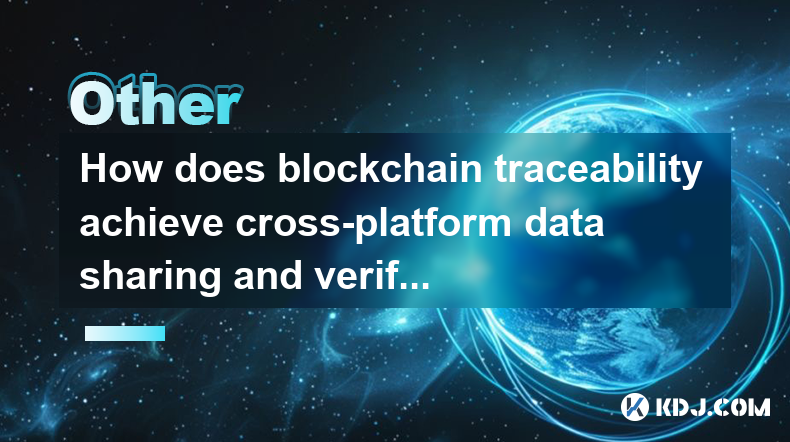
Key Points:
- Blockchain technology enables secure and transparent data sharing across multiple platforms.
- Cross-platform data verification ensures data consistency and integrity.
- Data traceability on the blockchain provides a detailed history of transactions and activities.
How Blockchain Traceability Achieves Cross-Platform Data Sharing and Verification
1. Data Tokenization and Encryption
- Blockchain traceability requires data to be tokenized, which involves converting it into a unique digital representation.
- Tokenized data is then encrypted using cryptographic techniques to ensure data privacy and confidentiality.
- This encryption ensures that only authorized parties can access and view the data.
2. Distributed Ledger Technology
- At the core of blockchain technology lies a distributed ledger, which is a shared database that records transactions and other data in a tamper-proof manner.
- Each participant in the network maintains their copy of the ledger, making it resistant to manipulation.
- This distributed ledger ensures data integrity and consistency across all platforms that participate in the network.
3. Cross-Chain Interoperability
- To achieve cross-platform data sharing, blockchain traceability utilizes cross-chain interoperability protocols.
- These protocols facilitate seamless communication and data exchange between different blockchain networks.
- Interoperability ensures that data can be accessed and processed on multiple platforms, breaking down silos and enhancing data accessibility.
4. Data Provenance and Provenance
- Blockchain traceability embeds data provenance, which provides a complete history of data origination and modifications.
- The blockchain acts as an immutable record, ensuring that any changes or updates to the data are tracked and chronologically recorded.
- This provenance information promotes transparency and accountability, enabling users to identify the source and evolution of data.
5. Data Verification and Auditing
- Blockchain traceability facilitates secure and efficient data verification and auditing.
- Auditors can easily trace data transactions, view data provenance, and determine the integrity of the data.
- This auditing process ensures data accuracy, protects against data tampering, and provides assurance to stakeholders.
6. Smart Contract Automation
- Blockchain traceability can be integrated with smart contracts to automate data sharing and verification processes.
- Smart contracts define specific rules and conditions that trigger data exchange and validation actions.
- Automation enhances efficiency, reduces human intervention, and minimizes the potential for errors.
FAQ:
Q: What are the benefits of blockchain traceability in cross-platform data sharing?
A: Benefits include improved data security, increased data transparency, enhanced data interoperability, streamlined auditing processes, and automated data sharing.
Q: How does blockchain traceability address data privacy concerns?
A: Tokenization and encryption techniques secure data on the blockchain, ensuring only authorized parties can access and view it.
Q: Can data be traced across different types of blockchain networks?
A: Yes, cross-chain interoperability protocols enable communication between different blockchain networks, allowing data to be traced across these boundaries.
Disclaimer:info@kdj.com
The information provided is not trading advice. kdj.com does not assume any responsibility for any investments made based on the information provided in this article. Cryptocurrencies are highly volatile and it is highly recommended that you invest with caution after thorough research!
If you believe that the content used on this website infringes your copyright, please contact us immediately (info@kdj.com) and we will delete it promptly.
- Arctic Pablo Coin (APC): A New Meme Coin Seeking to Soar to the Top
- 2025-02-27 02:55:31
- Arctic Pablo Coin, Official Trump Coin, and Official Melania Meme Coin: 3 Crypto Investments to Watch
- 2025-02-27 02:55:31
- After testing lows of $2.07 on Tuesday, XRP has reclaimed $2300, showing considerable strength.
- 2025-02-27 02:55:31
- Through cloud mining, users can generate Dogecoin and Bitcoin earnings without purchasing expensive equipment
- 2025-02-27 02:55:31
- A significant transfer of Ethereum (ETH) valued at $600 million went into Bybit from Mirana Ventures
- 2025-02-27 02:55:31
- A significant transfer of Ethereum (ETH) valued at $600 million went into Bybit from Mirana Ventures
- 2025-02-27 02:55:31
Related knowledge
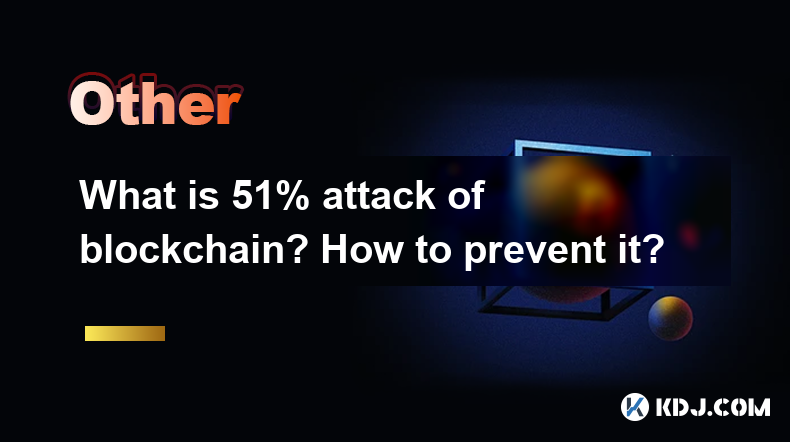
What is 51% attack of blockchain? How to prevent it?
Feb 27,2025 at 03:19am
What is a 51% Attack of Blockchain? How to Prevent It?Key Points:Understanding the 51% Attack: A 51% attack, also known as a majority attack, occurs when a single entity or a group of colluding entities gains control of over 50% of the network's hashing power (in Proof-of-Work blockchains) or stake (in Proof-of-Stake blockchains). This allows them to ma...
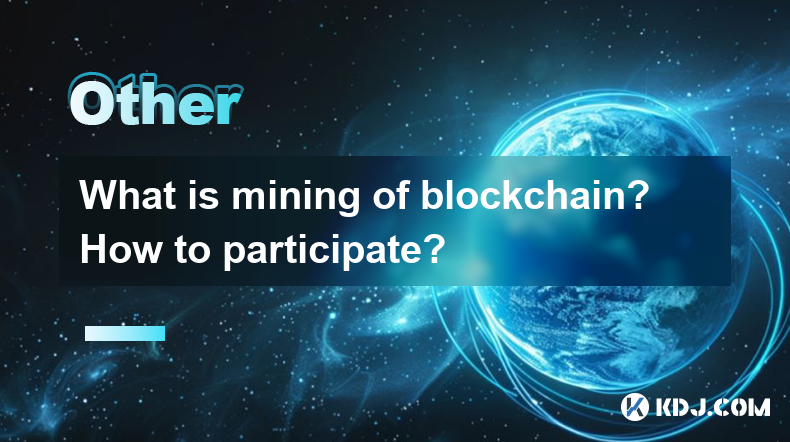
What is mining of blockchain? How to participate?
Feb 27,2025 at 12:36am
What is Mining of Blockchain? How to Participate?Key Points:Understanding Blockchain Mining: A deep dive into the process, its purpose within the blockchain ecosystem, and the different consensus mechanisms employed.Types of Mining: Exploring Proof-of-Work (PoW), Proof-of-Stake (PoS), and other less common consensus mechanisms, highlighting their differ...
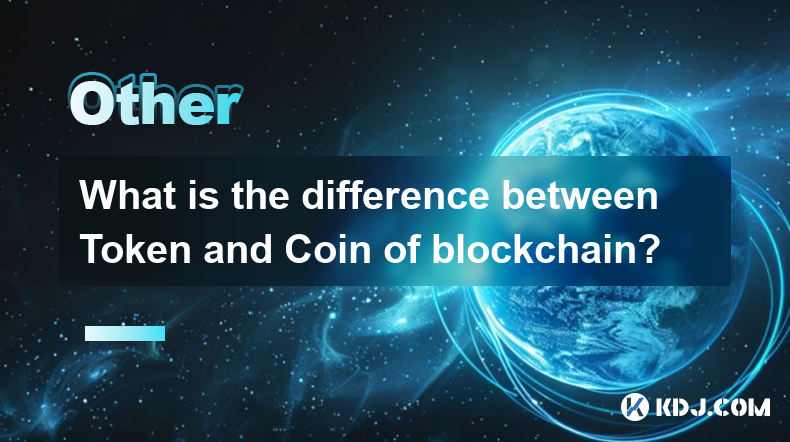
What is the difference between Token and Coin of blockchain?
Feb 27,2025 at 03:24am
What is the Difference Between Token and Coin of Blockchain?Key Points:Coins: Represent native cryptocurrencies built on their own blockchain networks. They serve as the primary medium of exchange within their respective ecosystems and are often used for transaction fees and staking. Examples include Bitcoin (BTC) and Litecoin (LTC).Tokens: Represent as...

How to solve the problem of blockchain expansion?
Feb 27,2025 at 03:37am
How to Solve the Problem of Blockchain Scalability?Key Points:Layer-2 Scaling Solutions: Exploring techniques like state channels, rollups (optimistic and zk-SNARKs), and sidechains to process transactions off-chain, significantly increasing throughput.Sharding: Dividing the blockchain into smaller, more manageable shards to process transactions concurr...
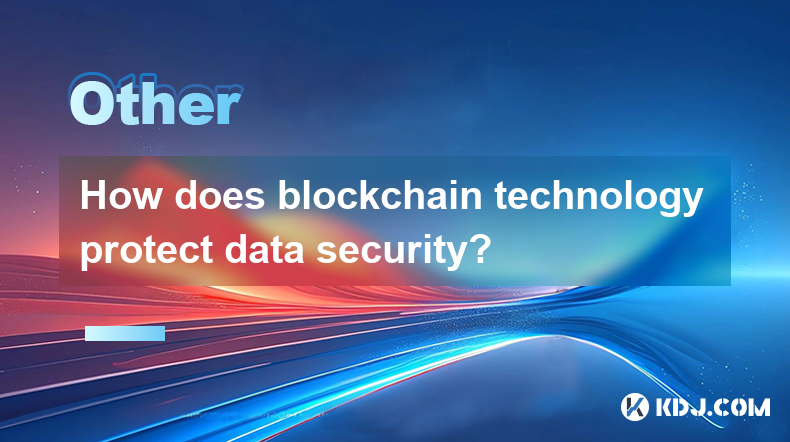
How does blockchain technology protect data security?
Feb 26,2025 at 05:54pm
How Does Blockchain Technology Protect Data Security?Key Points:Immutability: Blockchain's core strength lies in its immutable ledger. Once data is recorded, it cannot be altered or deleted, preventing tampering and ensuring data integrity. We will explore the mechanisms behind this immutability and its implications for security.Decentralization: Unlike...

How private is blockchain? Is it really anonymous?
Feb 26,2025 at 11:13pm
How Private is Blockchain? Is it Really Anonymous?Key Points:Blockchain is not anonymous: While blockchain transactions are pseudonymous, meaning they are linked to addresses rather than real-world identities, they are not truly anonymous. Various techniques can be used to link these addresses to individuals or entities.Privacy-enhancing technologies ex...

What is 51% attack of blockchain? How to prevent it?
Feb 27,2025 at 03:19am
What is a 51% Attack of Blockchain? How to Prevent It?Key Points:Understanding the 51% Attack: A 51% attack, also known as a majority attack, occurs when a single entity or a group of colluding entities gains control of over 50% of the network's hashing power (in Proof-of-Work blockchains) or stake (in Proof-of-Stake blockchains). This allows them to ma...

What is mining of blockchain? How to participate?
Feb 27,2025 at 12:36am
What is Mining of Blockchain? How to Participate?Key Points:Understanding Blockchain Mining: A deep dive into the process, its purpose within the blockchain ecosystem, and the different consensus mechanisms employed.Types of Mining: Exploring Proof-of-Work (PoW), Proof-of-Stake (PoS), and other less common consensus mechanisms, highlighting their differ...

What is the difference between Token and Coin of blockchain?
Feb 27,2025 at 03:24am
What is the Difference Between Token and Coin of Blockchain?Key Points:Coins: Represent native cryptocurrencies built on their own blockchain networks. They serve as the primary medium of exchange within their respective ecosystems and are often used for transaction fees and staking. Examples include Bitcoin (BTC) and Litecoin (LTC).Tokens: Represent as...

How to solve the problem of blockchain expansion?
Feb 27,2025 at 03:37am
How to Solve the Problem of Blockchain Scalability?Key Points:Layer-2 Scaling Solutions: Exploring techniques like state channels, rollups (optimistic and zk-SNARKs), and sidechains to process transactions off-chain, significantly increasing throughput.Sharding: Dividing the blockchain into smaller, more manageable shards to process transactions concurr...

How does blockchain technology protect data security?
Feb 26,2025 at 05:54pm
How Does Blockchain Technology Protect Data Security?Key Points:Immutability: Blockchain's core strength lies in its immutable ledger. Once data is recorded, it cannot be altered or deleted, preventing tampering and ensuring data integrity. We will explore the mechanisms behind this immutability and its implications for security.Decentralization: Unlike...

How private is blockchain? Is it really anonymous?
Feb 26,2025 at 11:13pm
How Private is Blockchain? Is it Really Anonymous?Key Points:Blockchain is not anonymous: While blockchain transactions are pseudonymous, meaning they are linked to addresses rather than real-world identities, they are not truly anonymous. Various techniques can be used to link these addresses to individuals or entities.Privacy-enhancing technologies ex...
See all articles

















































































